#mandelbulb 3d
Explore tagged Tumblr posts
Text

'Constructing Madness', by Hal Tenny.
2 notes
·
View notes
Text

“Corridors” - SjerZ
0 notes
Text

Top Of The World (Anniversary Version)
0 notes
Text
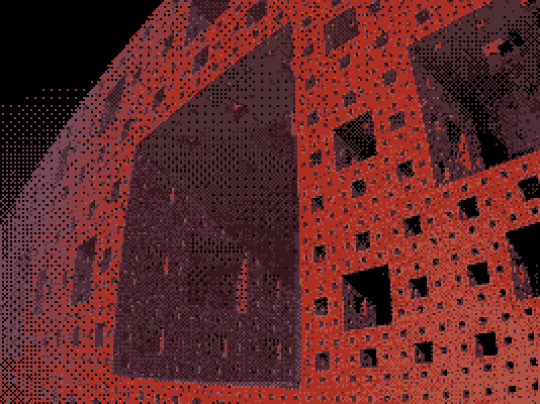
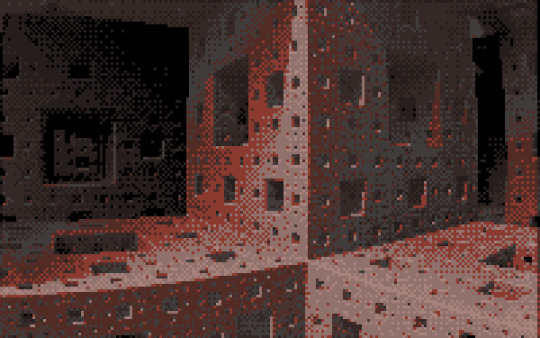
This is my objects.
#mandelbulber#fractal#my art#3d render#menger sponge#psx#(???? “psx” not really but people call this vibe that so we ball)
6 notes
·
View notes
Video
youtube
Fractal Landscapes - Art in Space [Spheres Wall]
#youtube#sacred geometry#cosmic#3D#quantum art#spirit#fractal#fractal art#abstract art#meditative#mandelbulber#immersive art#mesmerizing#digital art#new media art#motion design#new media#media art#design#creative
1 note
·
View note
Text
my partner "doesn't understand the point of fractals" and yet is immediately enraptured by videos of Mandelbulbs. this is some strong 3D chauvnism right here
11 notes
·
View notes
Note
For the scenes in the Khert is some of it rendered in CG? Both the shapes/how they interacts with things and the way it feels like texture is applied to it gives it that feel. I like it and no criticism either way (some still see it as "cheeting"), but I was curious.
The khert scenes are a composited combination of hand painted elements, comic art, and rendered mandelbulbs from Mandelbulb3D. Mandelbulbs are a kind of 3D fractal that I always thought perfectly represented what the khert would look like, as they keep iterating the closer you look and the further in you go, like a memory blossoming.
If you look up mandelbulbs, they should remind you of the khert. Check out this fly-through! This is the sort of crap Duane has to navigate >(
youtube
23 notes
·
View notes
Text
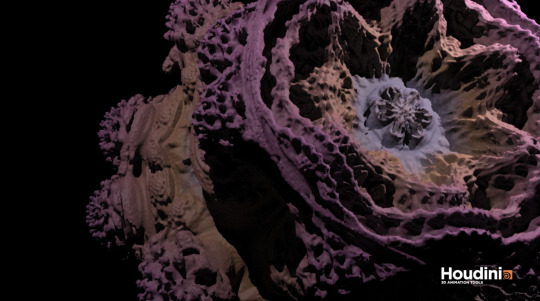


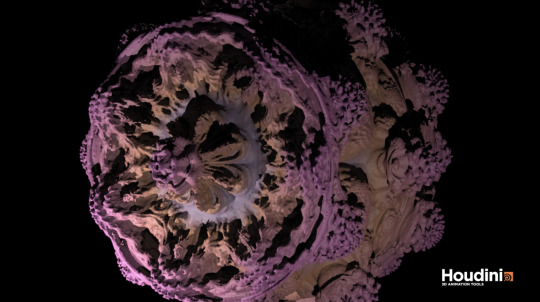
Mandelbulb (2018)
Creation of a 3D Mandelbulb model inside Houdini using a VEXexpression
5 notes
·
View notes
Text
No matter how carefully formed, by the time you are done cooking, you will be left with gnocci.
The smaller bits overcooked to the point of disintegration, the core maybe raw, maybe al dente.
Maybe it'll be good gnocci.
by the time it is cooked, it will no longer be a 3d manifold similar to the two dimensional mandelbrot set.
curious to hear y'all's suggestions for the worst possible pasta shape
(Assume that "pasta" needs to be made of sheets or strands of dough with enough surface area relative to thickness so that they can be cooked.)
53K notes
·
View notes
Link
Created with the Mandelbulber software, including music generated by Suno AI.
0 notes
Text
Fractals, Fabulosity, and Funky Mathematics: The Ultimate Guide to Becoming a Geometric Picasso
Ladies, gentlemen, and my beloved pixelated pancake pals, gather 'round as we embark on a journey of mathematical madness, fractal fantasies, and algorithmic absurdities! Today, we’re diving headfirst into the wildly wonderful world of mathematical art and fractal geometry—where numbers meet artistry and produce visuals that would make even Salvador Dali question his sanity.
First off, let’s talk fractals. Imagine your life as a series of TikTok challenges, each one more bizarre and addictive than the last. Now, picture those challenges repeating infinitely, like a never-ending loop of “Renegade” dances. That, my dear digital dumplings, is the essence of fractal geometry—patterns that replicate themselves on every conceivable scale, from the minuscule to the monstrous. And trust me, it’s not just mind-blowing; it’s like seeing your kale salad morph into a hyper-dimensional dragon while you’re still trying to figure out the latest Snapchat filter.
Now, grab your algebraic abacus and let’s conjure up some chaos. We’re diving into the mathematical cauldron to cook up visual masterpieces using nothing but equations and algorithms. Yes, my curious cacti, you heard right. Equations—the same dread-inducing beasts that haunted your high school nightmares—can transform into magical wands of artistic brilliance. It’s like Hermione Granger discovered an alternative career as an avant-garde artist, waving her wand to summon spirals and swirls out of thin air.
But hold your existential dread—this isn’t your grandmother’s math class. We’re talking about equations with the pizzazz of Tony Stark’s latest tech, the complexity of Loki’s schemes, and the aesthetic appeal of a perfectly filtered Instagram post. Take the Mandelbrot set, for example. Named after the legend himself, Benoît B. Mandelbrot, this set is like the Marvel Cinematic Universe of mathematics—an infinite saga of intrigue, drama, and endless detail. Zoom into one part of the Mandelbrot set, and you'll find an identical pattern, just like when you zoom in on celebrity drama and find more drama.
Speaking of celebrities, let’s pause for a hot second to imagine if Kim Kardashian were a fractal. Every time you zoomed in on her life, you’d find a new layer of glam, gossip, and grandeur—kind of like her Instagram feed, only with more mathematical rigor. The same goes for fractal art. Each zoom reveals more layers, more depth, and more opportunities to lose your mind in a labyrinth of logarithms.
Now, let’s get our hands dirty with some practical applications. You, yes you, can create your own fractal art with nothing more than a computer, some fancy software, and a sprinkle of creative insanity. Programs like Apophysis or Mandelbulb 3D allow you to play god (or at least a very eccentric deity) in your digital universe. Want to create a swirling vortex of colors that looks like it was pulled straight out of Doctor Strange’s spellbook? Go ahead! Feel like summoning a forest of fractal trees that’d make J.R.R. Tolkien weep with envy? The power is yours, my pixelated Picasso.
But wait, there’s more! The wonders of fractal geometry aren’t confined to your computer screen. No, siree! These psychedelic patterns can be found all around you, from the spiraling shells of snails to the branching networks of your neurons. It’s like the universe is one giant, infinitely complex canvas, painted by a mad artist with a penchant for repetition and a flair for the dramatic.
For those of you still skeptically sipping your overpriced lattes, consider this: fractal geometry isn’t just a nerdy hobby for math geeks and art freaks. It’s a tool with real-world applications that’ll blow your unassuming minds. From predicting stock market trends (yeah, Wall Street has a fractal fetish) to modeling the growth patterns of cities, fractals are everywhere. They’re the unsung heroes of science and art, bridging the gap between logic and creativity in a way that’s as beautiful as it is baffling.
Now, let’s talk pop culture, because what’s a deep dive into the mathematical abyss without a few nods to our favorite distractions? If you’ve ever watched “Rick and Morty,” you’ve seen fractals in action. Remember the time-traveling snake episode? The concept of time loops within loops is a playful nod to fractal geometry. Or take the mind-bending visuals in “Inception.” Those infinite staircases and recursive dream layers? Pure fractal genius. Even the dizzying special effects in the “Doctor Strange” movies owe a debt to our fractal friends.
But let’s bring it home with a personal touch. Imagine you, yes you, as the proud owner of a fractal masterpiece. You could hang it on your wall and impress your friends, who will think you’ve suddenly become some sort of artistic genius. Or better yet, create a fractal-based fashion line. Picture yourself strutting down the street in a jacket that looks like it was designed by Escher on acid. You’ll be the talk of the town, the toast of TikTok, the meme that keeps on giving.
So, my fractal-loving friends, the next time you’re bored and contemplating the mysteries of the universe—or just scrolling through your endless social media feeds—remember this: mathematical art and fractal geometry aren’t just brainy buzzwords. They’re your ticket to a world of endless creativity, mind-bending beauty, and a never-ending supply of nerdy street cred. Embrace the chaos, dive into the fractals, and unleash your inner geometric Picasso. Because in the grand, infinite loop of life, we’re all just patterns waiting to be discovered.
0 notes
Text

'Withstanding The Pressure', by Eric A. Ton - EricTonArts, 2022.
2 notes
·
View notes
Text
Generative Art: The Algorithmic Touch
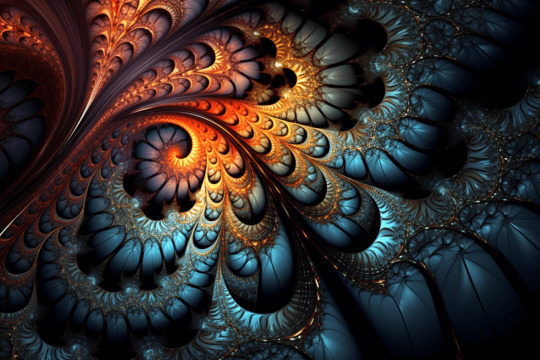
Generative art represents an exciting merger of creativity and computation, where algorithms replace the brush, shaping intricate patterns and complex systems that transcend the bounds of traditional art forms. This unique form of art has a variety of methodologies at its disposal, from fractals to neural networks. This article explores these key algorithms and techniques that contribute to the world of generative art. Fractals A fractal is a self-similar shape that repeats infinitely at every level of magnification. The enchanting visuals they generate have long been a fascination for mathematicians and artists alike. Classic fractal types, like the Mandelbrot and Julia sets, exhibit stunningly intricate patterns and infinite complexity. More advanced constructs like 3D fractals or Mandelbulbs extend the concept to create highly complex three-dimensional works of art. Fractal-based algorithms leverage the recursive nature of fractals, making them an ideal tool in the generative artist's toolbox. Cellular Automata Cellular Automata (CA) is a discrete model studied in computational theory. A well-known example, Conway's Game of Life, consists of a grid of cells that evolve through discrete time steps according to a set of simple rules based on the states of neighboring cells. Through these rules, even from simple initial conditions, CAs can produce complex, dynamic patterns, providing a rich foundation for generative art. Noise Functions Noise functions such as Perlin noise or Simplex noise create organic, smoothly varying randomness. These algorithms generate visually appealing patterns and textures, often forming the basis for more complex generative pieces. From naturalistic textures to lifelike terrains, the randomness introduced by noise functions can mimic the randomness in nature, providing a sense of familiarity within the generated art. Genetic Algorithms Genetic algorithms (GAs) are based on the process of natural selection, with each image in a population gradually evolved over time. A fitness function, which quantifies aesthetic value, guides the evolutionary process. Over several generations, this method results in images that optimize for the defined aesthetic criteria, creating a kind of survival of the fittest, but for art. Lindenmayer Systems Lindenmayer Systems (L-systems) are a type of formal grammar primarily used to model the growth processes of plant development but can also generate complex, branching patterns that imitate those found in nature. This makes L-systems a powerful tool for generative art, capable of producing intricate, natural-looking designs. Neural Networks The advent of deep learning has opened up exciting new possibilities for generative art. Neural networks, such as Generative Adversarial Networks (GANs) and Convolutional Neural Networks (CNNs), are trained on a dataset of images to generate new images that bear stylistic similarities. Variations of these networks like StyleGAN, DCGAN, and CycleGAN have been instrumental in creating a broad range of generative artworks, from mimicking famous painters to creating entirely new, AI-driven art styles. Physics-Based Algorithms Some generative artists turn to physics to inspire their work. These algorithms use models of natural processes, like fluid dynamics, particle systems, or reaction-diffusion systems, to create pieces that feel dynamic and organic. Physics-based algorithms can produce stunningly realistic or fantastically abstract images, often emulating the beautiful complexity of nature. Swarm Intelligence Swarm Intelligence algorithms, like particle swarm optimization or flocking algorithms, simulate the behavior of groups of organisms to generate art based on their movement patterns. The collective behavior of a swarm, resulting from the local interactions between the agents, often leads to intricate, evolving patterns, creating compelling pieces of art. Shape Grammars Shape grammars constitute a method that starts with a base shape and then iteratively applies a set of transformation rules to create more complex forms. This systematic approach of shape manipulation allows artists to produce intricate designs that can evolve in visually surprising ways, offering a versatile tool for generative art creation. Agent-Based Models Agent-Based Models (ABMs) simulate the actions and interactions of autonomous entities, allowing artists to investigate their effects on the system as a whole. Each agent follows a set of simple rules, and through their interactions, complex patterns and structures emerge. These emergent phenomena give rise to a range of visually captivating outcomes in the realm of generative art. Wave Function Collapse Algorithm The Wave Function Collapse Algorithm is a procedural generation algorithm that generates images by arranging a collection of tiles according to a set of constraints. This algorithm has seen wide use in generative art and game development for creating coherent and interesting patterns or complete scenes based on a given input. Chaos Theory Chaos theory studies the behavior of dynamical systems that are highly sensitive to initial conditions. Art based on strange attractors, bifurcation diagrams, and other concepts from chaos theory can generate intricate and unpredictable patterns. These patterns, although deterministic, appear random and complex, making chaos theory a fascinating contributor to generative art. Ray Marching Ray Marching, a technique used in 3D computer graphics, is a method of rendering a 3D scene via virtual light beams, or rays. It allows for the creation of sophisticated lighting effects and complex geometric shapes that might not be possible with traditional rendering techniques. Its flexibility and power make it an attractive option for generative artists working in three dimensions.
Conclusion
The intersection of art and algorithms in the form of generative art enables artists to explore new modes of creation and expression. From fractals to neural networks, a variety of techniques provide generative artists with powerful tools to create visually captivating and complex art forms. The dynamic and emergent nature of these algorithms results in artworks that are not just static images but evolving entities with life and movement of their own. Read the full article
#cellularautomata#fractals#generativeart#GeneticAlgorithms#L-Systems#Neuralnetworks#NoiseFunctions#Physics-BasedAlgorithms#RayMarching#SwarmIntelligence
0 notes
Video
youtube
sacred geometry, cosmic, quantum art, spirit art, fractal, fractal art, abstract art, landscape, meditative, mandelbulber, immersive art, mesmerizing, digital art, new media art, motion design, new media, media art, design, Experiential Art, creative, VJ, VJ Loop, video loop, infinite, motion background, 3D, generative art, mystical art, quantum art, spirit art, vfx, visual meditation, metaverse, music visuals, animation, math art, colors design, high vibes, trends, psy art
1 note
·
View note
Photo

mandelbulb3d
2 notes
·
View notes
